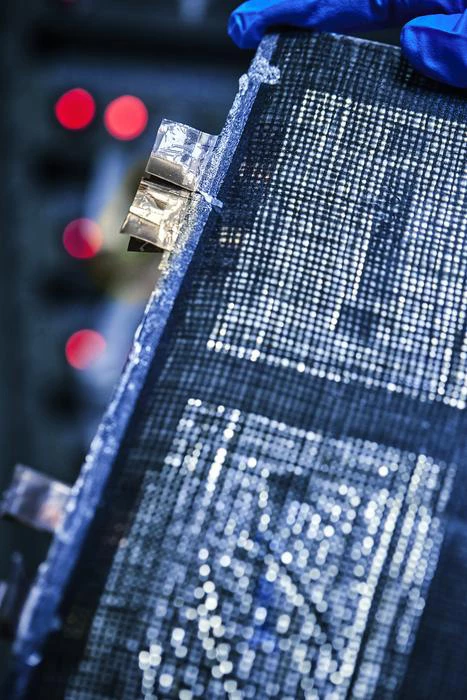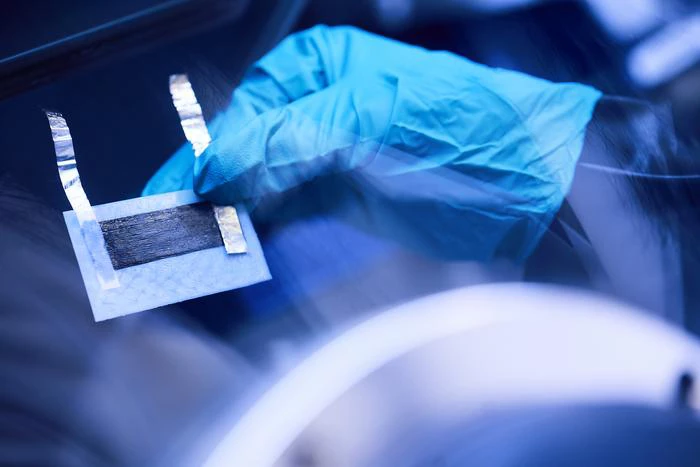Researchers say they've built and tested a 'structural battery' that packs a device or EV's chassis with energy, saving a ton of weight. It could unlock smartphones as thin as credit cards, laptops at half the weight and a 70% boost to EV range.
EVs rely heavily – pun intended – on large lithium-ion batteries to cover long distances. Researchers at Chalmers University of Technology wondered if they could build a battery that doubles as the load-bearing material holding the car together, and shed some weight.
As part of their work on what they call 'massless energy storage,' the research team in Sweden has developed a battery made of a carbon fiber composite. It promises similar stiffness to aluminum, while also being capable of storing a fair bit of energy – enough to be used commercially.

Carbon fiber, of course, is incredibly light, strong, and rigid – and thus a popular, if expensive, structural and exterior material in performance cars – as well as a critical material in aerospace applications, in which every gram counts.
But it can also serve as an effective electrode material when electrochemically engineered for that purpose. The Chalmers team, led by Professor Leif Asp, has been working on this for years, having initially published a study demonstrating this property of carbon fiber with a specific arrangement of crystals in 2018.

The new battery design has an energy density of 30 Wh/kg, which is... not great by automotive standards. For reference, the 53 kWh battery pack in a Hyundai Ioniq 6 is rated at 153 Wh/kg (links to PDF).
But that's the energy density of a battery pack sitting in a box; you've got to add on the weight of the entire car's structural chassis to make it a fair comparison, as this carbon fiber structural battery is designed to replace the whole frame, shaving substantial weight off the overall vehicle, while freeing up space to boot.
EV and device manufacturers can do what they like with this new equation, either shooting for significantly lighter products, or filling the freed-up space back up with more cells to boost overall energy storage.
The results could be revolutionary in practice. "We have made calculations on electric cars that show that they could drive for up to 70 percent longer than today if they had competitive structural batteries," says Asp.
The team's latest prototype is nearly three times as stiff as previous iterations, with an elastic modulus of 70 gigapascal, up from 25. The team says it's now as rigid and capable of supporting weight as aluminum, while weighing far less.
What's on the inside?
The battery design uses carbon fiber in both the anode and cathode, where it also serves as a reinforcement and a current collector. That negates the need for current collectors made of heavy materials like copper, as well as conflict metals like cobalt in the electrode design.

Plus, this battery uses a semi-solid electrolyte instead of a liquid one to move lithium ions between its terminals. As such, it's less flammable, and safer to use – although the team admits there's still some issues getting ions through the electrolyte quickly enough for high-power applications. More research is needed there.
Yes, this is another lab battery, and as such, these next-gen EVs and devices are still some years away – but mass production and commercialization is very much in the works.
Back in 2022, the university teamed up with Gothenburg-based VC firm Chalmers Ventures to spin out a new company called Sinonus. The company appointed a new CEO in June to propel its mission to commercialize massless energy storage, with a view to change how we build cars, gadgets, and even wind turbine blades.
"One can imagine," says Asp, "that credit card-thin mobile phones or laptops that weigh half as much as today, are the closest in time. It could also be that components such as electronics in cars or planes are powered by structural batteries. It will require large investments to meet the transport industry's challenging energy needs, but this is also where the technology could make the most difference."
Source: EurekAlert




